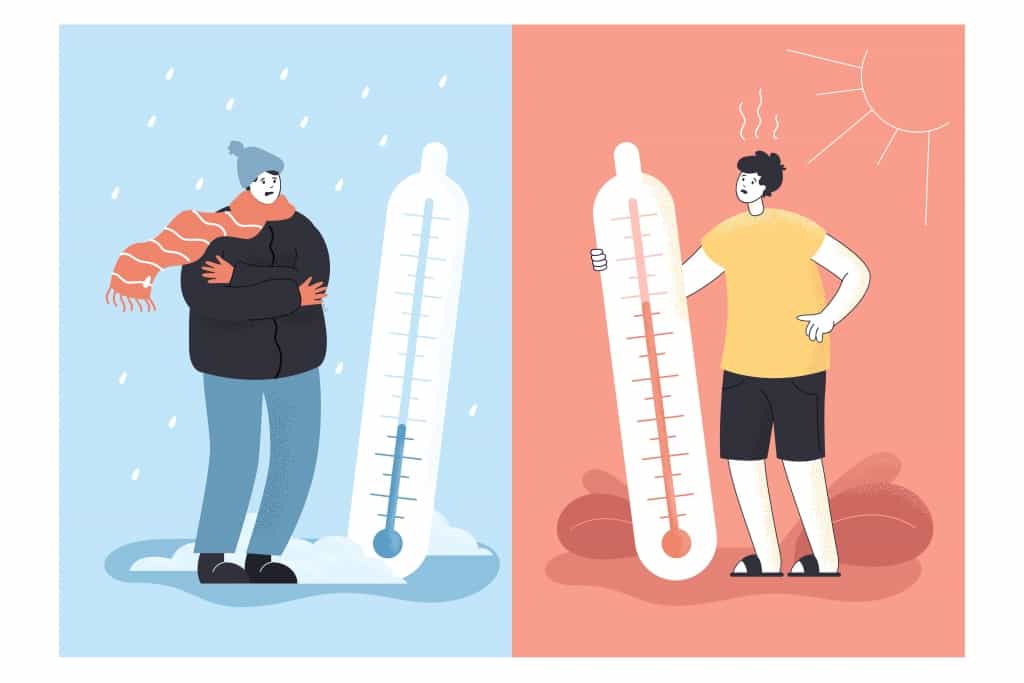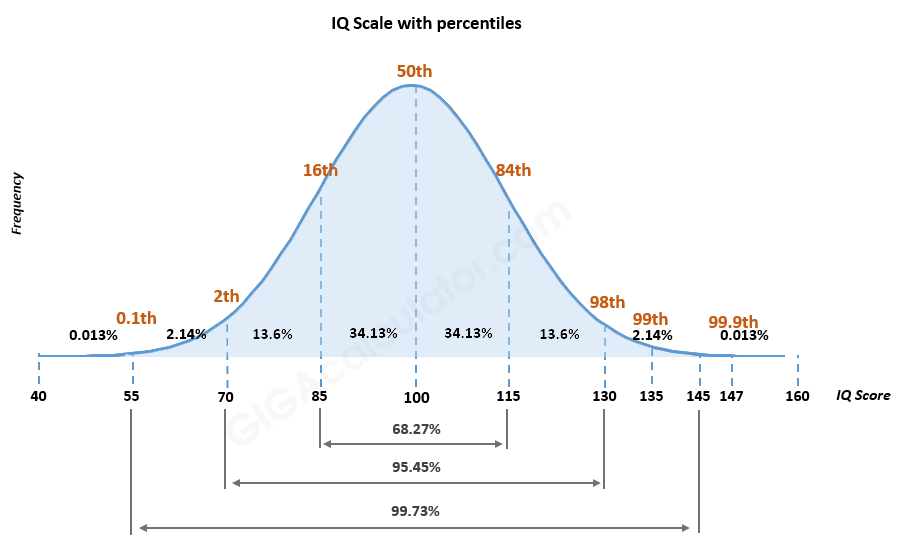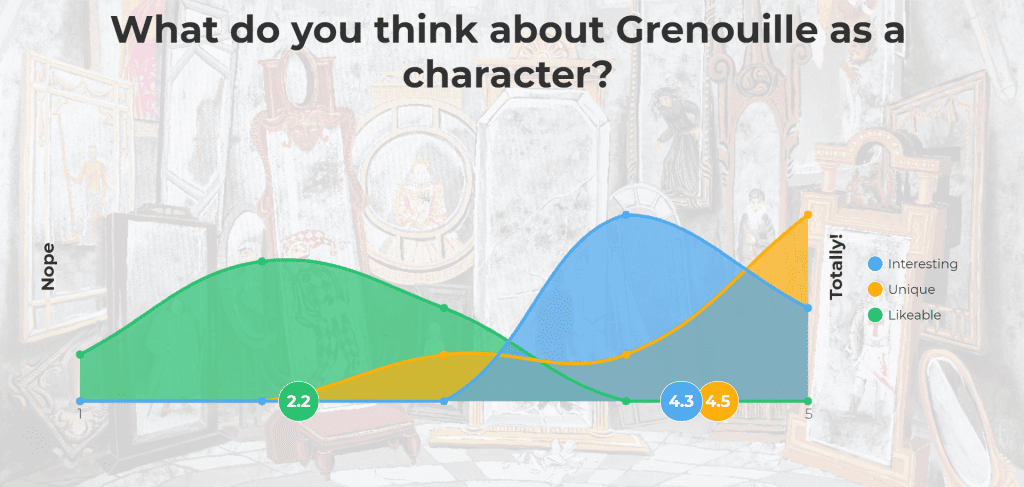오늘은 이 개념을 탐구해보겠습니다. 간격 척도 측정 — 복잡해 보일 수도 있지만 놀라울 정도로 흥미롭고 일상생활과 놀라울 정도로 관련이 있는 통계 세계의 초석입니다.
시간을 나타내는 방식부터 온도를 측정하는 방식까지, 간격 척도는 매우 중요한 역할을 합니다. 이 개념을 함께 살펴보며, 그 본질, 고유한 특징, 다른 척도와의 비교, 그리고 실제 사례를 자세히 살펴보겠습니다!
차례
효과적인 설문조사를 위한 팁
간격 척도 측정이란 무엇입니까?
간격 척도 측정은 통계 및 연구 분야에서 엔터티 간의 차이를 정량화하는 데 사용되는 데이터 측정 척도 유형입니다. 명목척도, 비율척도, 척도척도와 함께 4가지 수준의 측정척도 중 하나입니다. 순서 척도의 예.

이것은 심리학, 교육, 사회 연구 등 여러 분야에서 매우 유용합니다. 왜냐하면 이를 통해 사람이 얼마나 똑똑한지(IQ 점수), 날씨가 얼마나 더운지 또는 추운지(온도), 날짜 등을 측정하는 데 도움이 되기 때문입니다.
간격 척도 측정의 주요 특성
간격 척도 측정은 다른 유형의 측정 척도와 구별되는 독특한 특성을 가지고 있습니다. 이러한 특성을 이해하는 것은 연구 및 데이터 분석에서 간격 척도를 올바르게 사용하는 데 중요합니다. 주요 기능은 다음과 같습니다.
어디에서나 균등한 단계(동일한 간격):
간격 척도의 가장 큰 장점은 척도의 어느 위치에 있든 옆에 있는 두 숫자 사이의 간격이 항상 동일하다는 것입니다. 이는 한 항목이 다른 항목과 얼마나 많거나 적은지 비교하는 데 정말 유용합니다.
- 예를 들어, 온도에 대해 이야기할 때 10°C에서 11°C로의 상승은 20°C에서 21°C로의 상승과 같습니다.
0은 단지 자리 표시자일 뿐입니다(임의의 0점):
간격 척도에서 0은 "아무것도 없다"는 의미가 아닙니다. 0은 단지 세기 시작하기 위해 선택된 지점일 뿐이며, 다른 척도처럼 0이 무언가가 완전히 없음을 의미하는 것은 아닙니다. 좋은 예는 다음과 같습니다. 0°C가 온도가 없다는 뜻은 아니고, 그저 물이 어는 온도일 뿐이라는 뜻이에요.

덧셈과 뺄셈만:
간격척도를 사용하면 숫자를 더하거나 빼서 두 숫자의 차이를 계산할 수 있습니다. 하지만 0이 "없음"을 의미하는 것은 아니므로 곱셈이나 나눗셈을 사용하여 "두 배 더 뜨겁다" 또는 "반으로 차갑다"라고 표현할 수 없습니다.
비율에 대해 이야기할 수 없습니다:
이 척도에서 0은 실제로 0이 아니기 때문에, 무언가를 "두 배"라고 말하는 것은 의미가 없습니다. 이는 모두 "없음"을 의미하는 진정한 시작점을 놓치고 있기 때문입니다.
의미가 있는 숫자:
간격 척도의 모든 것이 순서대로 되어 있으며 한 숫자가 다른 숫자와 비교하여 얼마나 더 많은지 정확히 알 수 있습니다. 이를 통해 연구자들은 측정값을 정리하고 차이가 얼마나 크거나 작은지 논의할 수 있습니다.
간격 척도 측정의 예
간격 척도 측정은 값 사이의 간격이 동일하지만 실제 영점이 없는 항목 간의 차이를 수량화하고 비교하는 방법을 제공합니다. 다음은 일상적인 몇 가지 예입니다.
1/ 온도(섭씨 또는 화씨):
온도 눈금은 간격 눈금의 전형적인 예입니다. 20°C와 30°C의 온도 차이는 30°C와 40°C의 차이와 같습니다. 그러나 0°C 또는 0°F는 온도가 없다는 것을 의미하지 않습니다. 단지 눈금 위의 한 지점일 뿐입니다.
2/ IQ 점수:
지능지수(IQ) 점수는 구간척도로 측정됩니다. 점수 간 차이는 일정하지만, 지능이 전혀 없는 절대적인 0점은 없습니다.

3/ 역년:
우리가 시간을 측정하기 위해 연도를 사용할 때, 우리는 구간 척도를 사용합니다. 1990년과 2000년 사이의 간격은 2000년과 2010년 사이의 간격과 같지만, "XNUMX" 연도는 시간의 부재를 나타내지 않습니다.
4/ 시간:
마찬가지로, 12시간제나 24시간제에서 시간은 간격 측정입니다. 1시에서 00시 사이의 간격은 2시에서 00시 사이의 간격과 같습니다. 자정이나 정오는 시간의 부재를 나타내는 것이 아니라, 단지 주기의 한 지점일 뿐입니다.
5/ 표준화된 시험 점수:
SAT나 GRE 같은 시험의 점수는 구간척도로 계산됩니다. 점수 간 점수 차이는 동일하므로 결과를 직접 비교할 수 있지만, 0점이 "지식이 없다"거나 능력이 없다는 것을 의미하지는 않습니다.

이러한 예는 일상 생활의 다양한 측면과 과학 연구에서 간격 척도가 어떻게 사용되는지 보여 주며 실제 영점에 의존하지 않고도 정확한 비교가 가능합니다.
간격 척도를 다른 유형의 척도와 비교
공칭 규모:
- 그것은 무엇을 : 어느 것이 더 좋고 더 많은지 말하지 않고 항목을 카테고리나 이름으로 분류합니다.
- 예: 과일의 종류(사과, 바나나, 체리). 사과가 바나나보다 "더" 좋다고 할 수는 없습니다. 단지 다를 뿐입니다.
순서 척도:
- 그것은 무엇을 : 사물을 순서대로 나열하지만 어느 것이 다른 것보다 얼마나 더 좋거나 나쁜지는 알려주지 않습니다.
- 예: 레이스 위치(1위, 2위, 3위). 우리는 1차가 2차보다 낫다는 것을 알고 있지만 그 정도는 아닙니다.
간격 척도:
- 그것은 무엇을 : 단순히 사물의 순위를 매기는 것이 아니라, 사물 간의 정확한 차이점까지 알려줍니다. 하지만, 0이라는 정확한 시작점은 없습니다.
- 예: 앞서 언급한 대로 섭씨 온도입니다.
비율 척도:
- 그것은 무엇을 : 간격 척도처럼, 이 척도는 사물의 순위를 매기고 그 사이의 정확한 차이를 알려줍니다. 하지만 측정하는 대상의 "아무것도 없음"을 의미하는 진정한 영점도 있습니다.
- 예: 무게. 0kg은 무게가 없다는 뜻이고, 20kg은 10kg의 두 배 무겁다고 할 수 있습니다.
주요 차이점:
- 공칭 순서 없이 이름을 지정하거나 라벨을 붙일 뿐입니다.
- 서수 사물을 순서대로 정리하지만 각 순서 간의 간격은 언급하지 않습니다.
- 간격 두 지점 사이의 거리를 명확하게 알려주지만, 정확한 0이 없으므로 무언가가 "두 배"라고 말할 수 없습니다.
- 비율은 준다 모든 정보 간격이 그러하듯이, 여기에는 진정한 0이 있으므로 "두 배"와 같은 비교를 할 수 있습니다.
대화형 평가 척도를 통해 연구 수준을 높이세요
AhaSlides를 사용하면 측정값을 연구 또는 피드백 수집에 통합하는 것이 그 어느 때보다 쉬워졌습니다. 평가 척도고객 만족도, 직원 참여도, 또는 고객 의견 등 어떤 데이터를 수집하든 AhaSlides는 사용자 친화적인 플랫폼을 제공하여 프로세스를 간소화합니다. 설문조사나 연구에 완벽하게 맞는 맞춤형 평가 척도를 빠르게 만들 수 있습니다. 또한, AhaSlides의 실시간 피드백 기능을 통해 고객과 즉각적인 상호작용 및 참여를 유도하여 데이터 수집의 효율성을 높일 뿐만 아니라 참여도도 높일 수 있습니다.

🔔 정확하고 인터랙티브한 평가 척도로 연구의 수준을 높일 준비가 되셨나요? 지금 바로 AhaSlides를 탐색해 보세요. 템플릿 오늘 더 나은 통찰력을 얻기 위한 여정을 시작해보세요!
결론
간격 척도 측정을 활용하면 연구에서 데이터를 수집하고 분석하는 방식을 완전히 바꿀 수 있습니다. 고객 만족도 평가, 행동 변화 연구, 시간 경과에 따른 진행 상황 추적 등 어떤 작업을 하든 간격 척도는 신뢰할 수 있고 직관적인 방법을 제공합니다. 통찰력 있는 데이터를 얻는 핵심은 연구에 적합한 도구와 척도를 선택하는 것에서 시작된다는 점을 기억하세요. 간격 척도 측정을 활용하여 연구의 정확성과 통찰력을 한 단계 더 높여보세요.
참고 : form.app | 그래프패드 | QuestionPro







